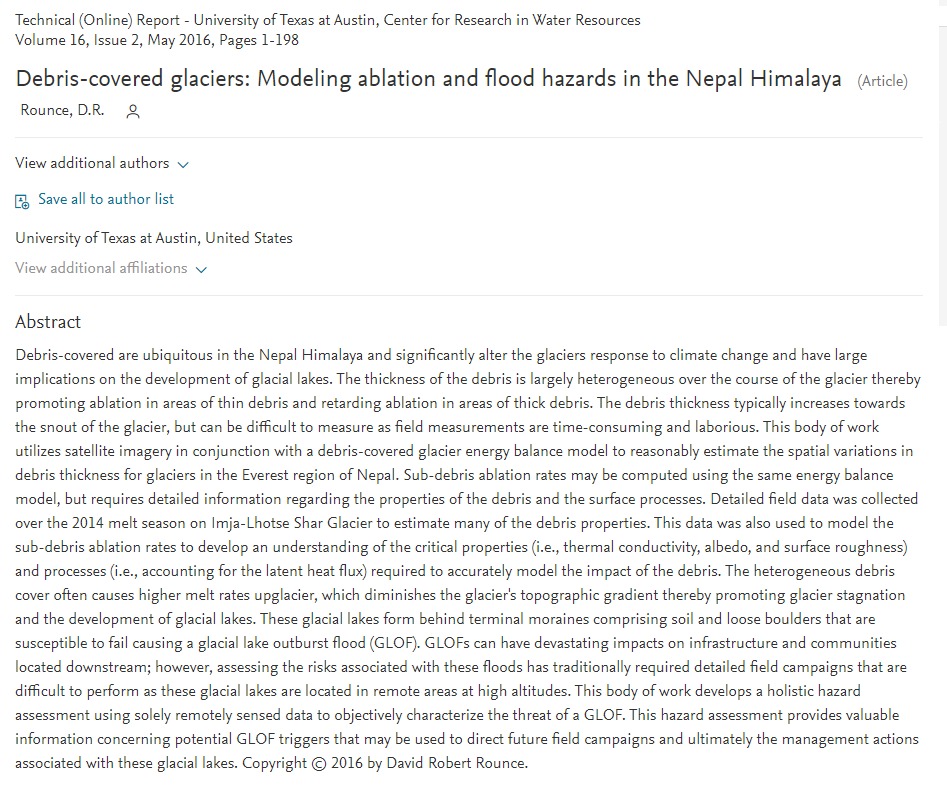
Copyright © 2016 by David Robert Rounce. Debris-covered are ubiquitous in the Nepal Himalaya and significantly alter the glaciers response to climate change and have large implications on the development of glacial lakes. The thickness of the debris is largely heterogeneous over the course of the glacier thereby promoting ablation in areas of thin debris and retarding ablation in areas of thick debris. The debris thickness typically increases towards the snout of the glacier, but can be difficult to measure as field measurements are time-consuming and laborious. This body of work utilizes satellite imagery in conjunction with a debris-covered glacier energy balance model to reasonably estimate the spatial variations in debris thickness for glaciers in the Everest region of Nepal. Sub-debris ablation rates may be computed using the same energy balance model, but requires detailed information regarding the properties of the debris and the surface processes. Detailed field data was collected over the 2014 melt season on Imja-Lhotse Shar Glacier to estimate many of the debris properties. This data was also used to model the sub-debris ablation rates to develop an understanding of the critical properties (i.e., thermal conductivity, albedo, and surface roughness) and processes (i.e., accounting for the latent heat flux) required to accurately model the impact of the debris. The heterogeneous debris cover often causes higher melt rates upglacier, which diminishes the glacier's topographic gradient thereby promoting glacier stagnation and the development of glacial lakes. These glacial lakes form behind terminal moraines comprising soil and loose boulders that are susceptible to fail causing a glacial lake outburst flood (GLOF). GLOFs can have devastating impacts on infrastructure and communities located downstream; however, assessing the risks associated with these floods has traditionally required detailed field campaigns that are difficult to perform as these glacial lakes are located in remote areas at high altitudes. This body of work develops a holistic hazard assessment using solely remotely sensed data to objectively characterize the threat of a GLOF. This hazard assessment provides valuable information concerning potential GLOF triggers that may be used to direct future field campaigns and ultimately the management actions associated with these glacial lakes.